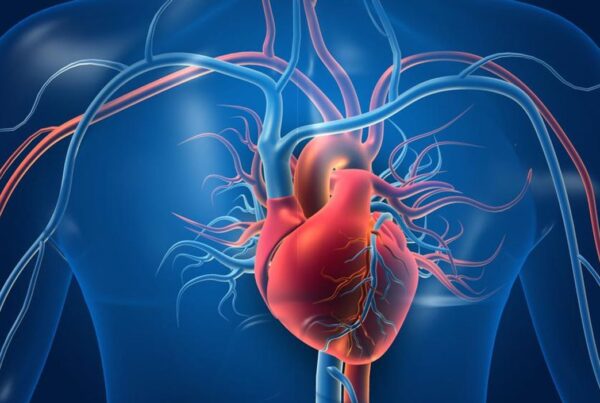A silent heart attack is a term used to describe a heart attack that occurs without the usual, noticeable symptoms. While the typical signs of a heart attack, such as chest pain, shortness of breath, and dizziness, are hard to miss, a silent heart attack can occur without these alarming signals, or with very mild symptoms that are easily overlooked or misattributed to other conditions. This subtle nature makes silent heart attacks particularly dangerous, as they can go undiagnosed for years, potentially leading to long-term heart damage and even death if left untreated.
In this article, we’ll explore the concept of a silent heart attack, its symptoms, risk factors, and why it’s crucial to stay vigilant about heart health.
What is a Silent Heart Attack?
A silent heart attack, medically known as a non-ST elevation myocardial infarction (NSTEMI), is a heart attack that does not present with the classic, severe symptoms associated with more recognizable heart attacks. While a typical heart attack often involves intense chest pain, heavy pressure on the chest, and discomfort in the arms, back, neck, or jaw, silent heart attacks might only cause mild discomfort or go completely unnoticed.
In these cases, the damage to the heart muscle still occurs, but the person may not experience the characteristic pain or distress that usually prompts an emergency response. As a result, silent heart attacks often go undiagnosed, and many people may not realize they’ve had one until they undergo tests for another health concern.
Symptoms of a Silent Heart Attack
The term “silent” doesn’t mean that a person is entirely unaware of the heart attack—it just means that the symptoms are subtle and may not raise alarms. Common signs that may indicate a silent heart attack include:
- Mild chest discomfort or pressure: Unlike the intense chest pain typically associated with a heart attack, this pain is often mild and feels like discomfort or tightness, which may easily be ignored.
- Unexplained fatigue: Feeling unusually tired or exhausted, even after minimal physical activity, can be an indication of heart problems. This tiredness can be so gradual that individuals may attribute it to stress, age, or other lifestyle factors.
- Shortness of breath: Mild breathlessness during normal activities could be a sign of heart strain. In some cases, people might chalk it up to asthma, anxiety, or other respiratory conditions.
- Pain in the upper body: A silent heart attack can manifest as discomfort in areas such as the neck, jaw, back, or arms. These symptoms might be mild and sporadic, leading people to dismiss them as muscle aches or unrelated issues.
- Indigestion or nausea: Silent heart attacks can cause symptoms that resemble digestive problems, such as a feeling of indigestion, mild nausea, or discomfort in the stomach area. Many individuals attribute this to food or gastrointestinal issues, failing to recognize it as a potential sign of heart trouble.
- Dizziness or lightheadedness: Some individuals may experience mild dizziness or a faint sensation, which can be attributed to dehydration or low blood sugar, but it could also be a sign of heart issues.
Why Are Silent Heart Attacks Dangerous?
The biggest risk with a silent heart attack is that it often goes undiagnosed. If the heart attack is not recognized, the damage to the heart muscle continues to affect the person’s cardiovascular health. Over time, this can lead to heart failure, arrhythmias (irregular heartbeats), and a higher likelihood of a more severe heart attack.
Several factors make silent heart attacks particularly dangerous:
- Delayed Treatment: Since there are no clear symptoms, individuals may not seek immediate medical attention, missing the opportunity for early intervention and treatment that could prevent further damage.
- Increased Risk of Complications: Without timely medical intervention, the heart’s ability to pump blood effectively may decline, increasing the risk of heart failure and other complications like arrhythmias.
- Cumulative Damage: Silent heart attacks may be the result of gradual, repeated episodes of ischemia (reduced blood flow to the heart), leading to cumulative damage. This often results in a “silent” weakening of the heart muscle, which can eventually lead to noticeable heart problems.
- A False Sense of Security: Many people who experience a silent heart attack may feel fine afterward, leading them to believe they’re in good health. This false sense of security can result in neglecting future heart health, which only compounds the risk of a more severe heart attack in the future.
Risk Factors for Silent Heart Attacks
Certain risk factors increase the likelihood of having a silent heart attack. These include:
- Age: Older individuals are at higher risk due to the natural weakening of the heart and blood vessels with age.
- Diabetes: Diabetics are more likely to experience silent heart attacks because diabetes can damage the nerves responsible for detecting pain, masking symptoms of a heart attack.
- Hypertension (High Blood Pressure): Chronic high blood pressure can increase the risk of heart disease, making silent heart attacks more likely.
- High Cholesterol: Elevated cholesterol levels can lead to the buildup of plaque in the arteries (atherosclerosis), which restricts blood flow to the heart, increasing the risk of a heart attack.
- Smoking: Smoking damages the blood vessels and increases the risk of heart disease, including silent heart attacks.
- Sedentary Lifestyle: Lack of physical activity contributes to poor heart health, making silent heart attacks more likely.
- Family History of Heart Disease: If heart disease runs in your family, you may be at higher risk for silent heart attacks, even if you don’t have clear symptoms.
How Are Silent Heart Attacks Diagnosed?
Given the subtle nature of a silent heart attack, diagnosing it often requires specific tests. Some common diagnostic methods include:
- Electrocardiogram (ECG): An ECG can identify abnormal heart rhythms and changes in the heart’s electrical activity, which may indicate a heart attack.
- Blood Tests: Elevated levels of certain enzymes, such as troponin, can indicate heart muscle damage, even if the person is not experiencing the typical symptoms of a heart attack.
- Echocardiogram: This imaging test uses sound waves to create pictures of the heart, allowing doctors to assess how well the heart is functioning and whether any damage has occurred.
- Stress Tests: In some cases, doctors may use stress tests to monitor how the heart responds to physical exertion, which can reveal hidden heart issues.
Preventing Silent Heart Attacks
Although silent heart attacks may seem unavoidable, there are steps individuals can take to reduce their risk:
- Regular Heart Health Screenings: Routine check-ups with a healthcare provider can help identify risk factors like high blood pressure, diabetes, and high cholesterol, which contribute to heart disease. Early intervention can prevent silent heart attacks.
- Healthy Lifestyle Choices: Eating a balanced diet, exercising regularly, quitting smoking, and maintaining a healthy weight are key factors in preventing heart disease and reducing the risk of silent heart attacks.
- Managing Stress: Chronic stress can negatively impact heart health. Practicing stress management techniques like meditation, yoga, and mindfulness can reduce the risk of heart disease.
- Medication: For those at high risk of heart disease, medications such as statins for cholesterol, blood pressure medications, and blood thinners may help reduce the risk of heart attacks.
A silent heart attack is a hidden, yet dangerous condition that can lead to serious heart complications if left untreated. Since many people experience mild or no symptoms, it’s crucial to stay proactive about heart health by managing risk factors and seeking regular check-ups. If you notice any unusual fatigue, discomfort, or shortness of breath—even if mild—don’t ignore it. Early detection and lifestyle changes can help you reduce the risk of silent heart attacks and lead to a longer, healthier life.



